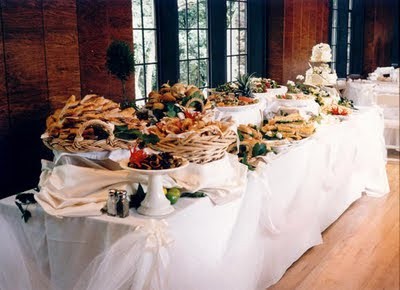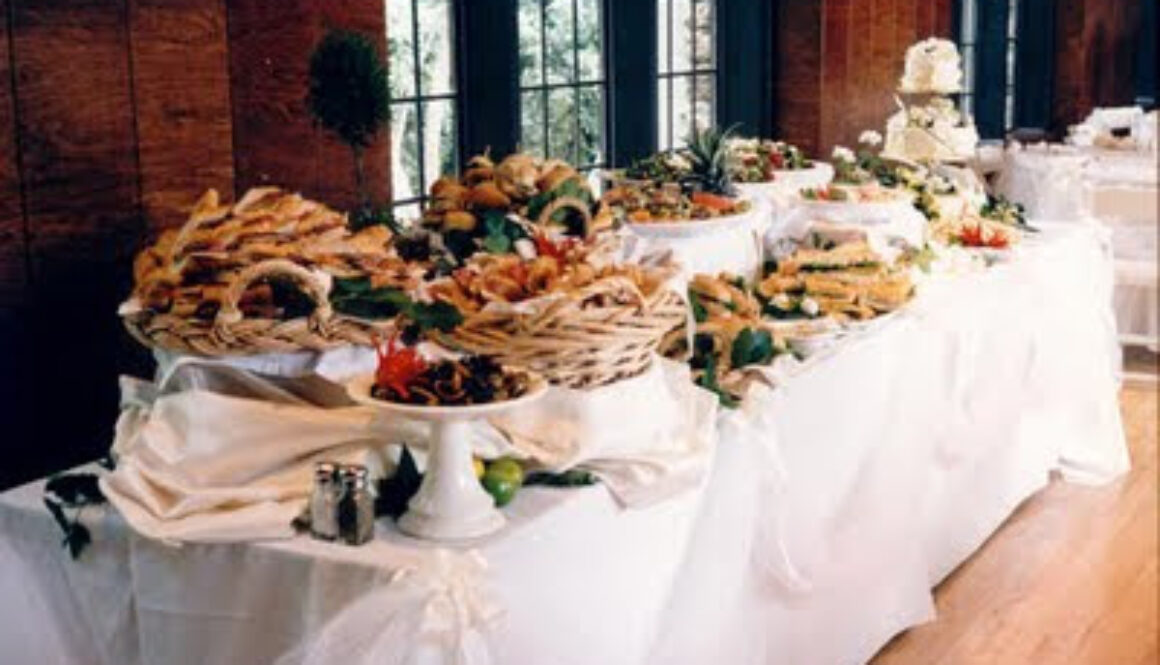Wedding Dinner Styles

Family Style
Serving food family style means that all the food is placed on the table in different dishes, and passed around the table. It creates a more casual tone than serving a plated dinner. It also allows your guests to have more choice and control over what they want to eat. For example, if a guest isn’t a fan of the main meat entree, they can have more of the side dishes. And unlike buffet style, they don’t have to wait in a line or wait for their table to be called up in order to eat with options. Keep in mind however, if you are serving fish, which some types break easily, it may not be the best choice as it is too diffifcult to serve each person from a platter.
Plated
Having a plated meal means that each guests is served a pre-portioned plate with the main entree and side dishes. Generally doing this creates a more formal tone. An advantage of this is that your guests don’t have to wait in line for food, and you have a lot more control over how long dinner is actually going to take. A disadvantage is that it limits their number of food choices, and there may be guests that don’t like the food you are serving. Additionally, plated meals may not work well for guests who are vegetarian or have food allergies. Normally only two entree options are offered in a sit-down dinner.
Buffet
Buffet style means that one or two long tables are set up with the food choices. Sometimes this can be the cheapest option because it cuts down on the number of waitstaff needed. However, if you offer a wide variety of food options, it could run you more than a plated or family style dinner. The advantage of buffet style is that guests have complete control over what they want to eat, and how much of it. The disadvantage is that guests have to wait in line or wait for their table to be called. Because of this, buffet style dinners usually take longer than plated or family style dinners.
~Liz
photo: http://www.dietsinreview.com/diet_column/wp-content/uploads/2008/08/wedding-buffet.jpg

